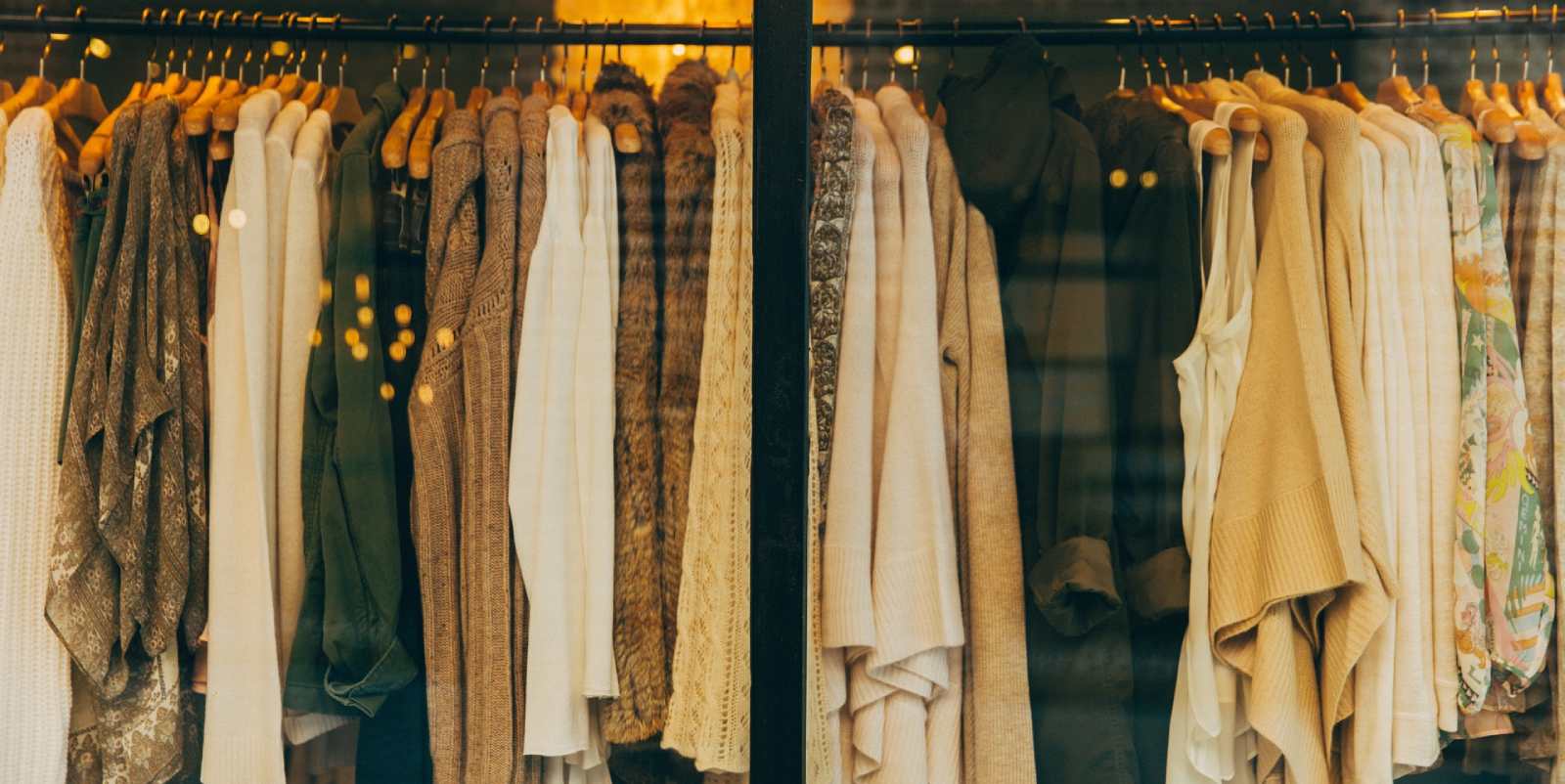The fashion industry is broken. Of course, you won’t notice this walking around the shops, but behind the scenes at a production level the resources needed to make your clothes are rapidly approaching their limit.
With circular fashion touted as the savior of this phenomenally wasteful industry, hundreds of the biggest fashion brands have rushed to associate with it.
Speaking with Mart Drake-Knight, co-founder of circular brand Rapanui, we asked whether big brands can back up their bold rhetoric and make real advances towards a circular economy, or is circular fashion being used as the next best tool for greenwashing the same old practices.
[If you are looking to find more ethical fashion online, Click here to discover sustainable products from all across Europe.]

The Case for Change
Over the last 20 years, the explosion of fast fashion alongside a growing middle class with cash to burn, has led to a doubling of clothing production. Meanwhile, the number times we wear these clothes has dropped by a third.
We now consume and dispose of clothing faster than ever before, with a staggering 73% of our clothing eventually ending up in landfill. Sadly, most brands are not motivated to make clothes that last, with some chains, such as Zara, even admitting to producing clothes that are designed to be used less than 10 times.
This style of aggressive consumerism has led to a level of demand that has stretched natural resources to their limits. We often forget that most of our clothes are made of natural materials that we grow out of the earth. They require light, water, nutrients, fertilisers, pesticides, transportation, and ultimately, energy.
The textile industry is now moving at such a pace that it creates 10% of global CO2 emissions, with cotton production alone using 16% of the world’s pesticides, and 2,700 litres of water for just one t-shirt. We are quite literally rinsing the earth dry of resources, and with production projected to increase 81% by 2030, we are sleepwalking into an environmental disaster.
Circular Economies for A Sustainable Future
The current system used by 99% of the fashion and textile industry is not fit for purpose in the face of growing demand. Even with a major shift to sustainable practices, and the best will in the world, population growth alone will make reducing demand almost impossible.
Today, most brands follow the traditional linear model of take - make - dispose. This means all of the input energy is lost at the disposal stage, and we start from square one, by taking even more of our finite planetary resources.
Currently, less than 15% of clothes are collected for recycling, and less than 1% of used material actually ends up integrated into new clothing. You don’t need us to explain how blatantly wasteful this system is.
A circular economy for fashion offers by far the best, and perhaps most obvious, solution to this growing problem. A system of production in which waste and pollution are designed out, by keeping extracted resources in circulation for as long as possible. Then, when a product is beyond use it can be recycled or properly biodegraded, thereby completing the circle.
The broader circular model also focuses on sustainable production, so that the ‘take’ and ‘make’ parts of the system minimise environmental impact as well. Though it is at the disposal stage where circular fashion is unique and most promising.
For the fashion industry, a circular economy really does make sense. Most clothes are predominantly made of natural materials, like cotton, wool, silk, or even viscose. They lend themselves to being re-used, and recycled. A 100% cotton t-shirt, for example, is totally biodegradable, and suitable for re-manufacture.
In order to realise the goals of circular fashion we need to re-think the product life cycle. As Mart Drake-Knight explains:
“To recover and remake clothes, they need to be designed from the start with this in mind. It’s not just about closing the loop, it has to be clean.” …“You can’t take the egg out of an omelette, like you can’t take plastic out of nature meaningfully. It’s best to keep material flows clean if you are serious as a designer about long term (i.e. circular) sustainability.”

Where We Are Now
What’s interesting is that the principals of a circular economy are so applicable to fashion that the industry simply cannot ignore it, even if it wanted to. It’s rapidly been embraced as the go-to sustainability concept, since its mainstream emergence in 2014.
This year 90 fashion brands, including the likes of Nike, Decathlon, ASOS, GAP, and Tommy Hilfiger, have all pledged support for the Global Fashion Agenda’s (GFA) Circular Fashion System commitment. Sounds great, right?
Perhaps not. Circular fashion is so on-trend that it’s become something of a buzz word that everyone wants to associate with. But let’s be clear, talking about circularity in fashion is very different from enacting real change.
According to the GFA, just 12.5% of the global fashion industry has taken ‘concrete action’ towards integrating principles of a circular economy into their business models. And your guess is as good as mine when it comes to defining what exactly constitutes ‘concrete action’. There are endless special reports and design projects, commissioned by some of the biggest brands, with the aim of showing what ‘could’ be done if we conceive products with circularity in mind.
The problem is that all the talk rarely translates into material change. At some point all barriers towards implementing circular models within the fashion industry come down to money. Changing long established practices, especially in large supply chains, is seriously expensive, and as yet, none of the biggest fashion brands have really committed to recycling or re-manufacturing on a scale that compensates for their own production.
A point backed up by the first hand experience of Mart Drake-Knight:
“Fundamentally the economy does not reward a company for recovering their waste, or using renewables, or natural materials. So it requires a total redesign of the business model and systems to make this kind of thing work.”
From some of the most powerful and profitable brands there is a lot of talk about the need for industry wide commitment. Hiding behind the inaction of others, as if they haven’t got the resources to make changes on their own steam. The sentiment is there, but when profit is at stake the collective will is incredibly weak.

Let’s Talk About H&M
Take H&M for example, who have positioned themselves as industry leaders on sustainability, by pouring millions into green advertising campaigns. Meanwhile, their business model is still founded squarely on the wasteful prototype of fast fashion; cheap, disposable clothes.
They claim to mitigate their environmental impact with their recycling program called ‘Bring It’, allowing customers to return used clothing to stores in exchange for 15% off when they spend more than $50. Of these returned garments, around 60% are still usable and are sent to clothing charities, and the remainder are used to make scrap fabric like cleaning cloths.
The problem is, after their second life the majority of re-used clothes and scrap fabric will still end up in landfills. Meanwhile, an incredible 0.1% of donated fabric actually ends up integrated into new H&M clothing.
In effect, H&M are just deferring waste disposal onto other people. Sure, some of the clothes remain in use for longer, but ultimately H&M is still failing to take responsibility for their own waste through safe disposal or re-manufacturing, and who would when you create so much of it. The system is not even close to circular, without a thought for durability or recycling at the design phase.
What H&M has created is a fantastic PR campaign, that gives customers a false sense of righteousness as they spend that discount voucher after dumping the clothes they had just bought 6 months earlier. Publicly, at least, it looks like everyone has ‘done the right thing’, but long term, pushing our waste onto others will not scratch the surface of the environmental problems facing the fashion industry.
[Tired of big brands that prioritise profit over the environment? Click here to try the ethical clothing search tool, and discover sustainable products from all across Europe.]
Who Really Closes the Loop
Whilst the biggest fashion brands squabble over their own deficiencies, passing the responsibility amongst themselves, it’s left to the smaller brands to show us how it’s really done. Companies like Rapanui, haven’t waited for ‘industry wide consensus’, they’ve simply prioritised the environmental and social challenges, and designed their own systems accordingly, as Mart Drake-Knight explains:
“The challenge is developing new technologies that do not currently exist, or implementing existing technologies in new ways, to make it happen.”
“Short term you could probably make more money pumping out super cheap plastic stuff for one-wear. But it’s not sustainable.” … “The economics of ‘losing everything eventually’ vs the economics of ‘investing in something that will last’ is a no brainer isn’t it? You don’t even need a spreadsheet.”
Rapanui are pioneering how circular fashion should really work. Where virgin materials are used their sourcing and manufacturing processes are incredibly clean and traceable. From their base on the Isle of Wight they have created a supply chain that’s just about as sustainable and circular as currently possible.
However, the most impressive part comes later. Once clothes are worn out they can be returned to Teemill for re-manufacture. This means used garments are converted back to yarn, which is then spun to produce clothes again. Old becomes new, and this time hardly any natural resources have been extracted.
This is real closed loop manufacturing. An authentic vision of circular fashion, made possible because Rapanui chose to do everything with sustainability in mind from the very beginning. Mart Drake-Knight tells us:
“there are also some really interesting economic dynamics” … “As soon as your entire business makes new from old, your entire customer base is both your consumer and also your supplier. And material is no longer a cost, it’s an asset.”

How We Can Help
Companies like Rapanui have demonstrated that circular fashion is not a fantasy beyond reach. They show us what is possible right now if you build a brand with sustainability as a genuine priority, instead of an ill conceived afterthought.
Brands that make clothes with real foresight to close manufacturing loops only serves to demonstrate just how careless mainstream fashion continues to be. The excuse of waiting on industry wide cooperation is wearing thin, when clearly it’s the bottom line, profit, that is what’s holding back progression.
With this in mind, we can make a simple and powerful choice. Obviously money counts, so we can use our spending power to do the talking. By avoiding brands that are wasteful by design and choosing sustainable alternatives, we can send a powerful message for change. Hopefully the days of take - make - dispose will be numbered.














 Be the first to know when Europe's top ethical brands are on sale, sign up to our newsletter here
Be the first to know when Europe's top ethical brands are on sale, sign up to our newsletter here